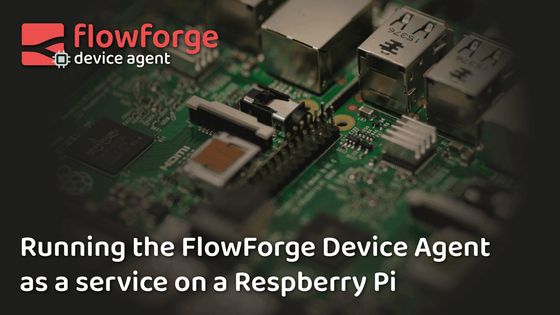Running the FlowFuse Device Agent as a service on a Raspberry Pi
Step by step guide to run the device agent as a service

FlowFuse's device agent allows you to manage and run your Node-RED instances on your own hardware such as a Raspberry Pi. This can be very useful where an application you've written needs to run flows with direct access to hardware sensors.
In this article I'm going to explain the steps to configure our device agent to run as a service in Raspbian OS, or any other OS that uses systemd.
Why run the device agent as a service?
The standard process for running FlowFuse's device agent is to start it on the command line using the command flowforge-device-agent. This works fine for testing but for long-term installations it's useful to run the device agent as a service. Once running as a service, the device agent will continue to run even if your device is restarted or your SSH connection to your Pi fails.
Set up steps
Create the Service File
The first step is creating the systemd unit file for your service. You can start by creating a new file in the
/etc/systemd/system directory with a .service file extension:
sudo nano /etc/systemd/system/flowforge-device-agent.service
Define the Service
In the service file, you'll need to define the following parameters:
Description: A brief description of what the service does.ExecStart: The command(s) to execute to start the service.User and Group: The user and group that the service runs as.Type: Whether the service is a simple or a forking type.
We've created the content you'll need for this file and shared it via this GitHub page.
Copy the code from that page into the nano window you created in step 1, then save and exit out of nano.
Starting the service on boot (optional)
If you want Node-RED to run when the Pi is turned on, or re-booted, you can enable the service to autostart by running the command:
sudo systemctl enable flowforge-device-agent.service
To disable the service, run the command:
sudo systemctl disable flowforge-device-agent.service
Using your new service
You can now start your service with the start command:
sudo systemctl start flowforge-device-agent
You can check the current status with the status command:
sudo systemctl status flowforge-device-agent
Finally, if you need to stop your agent you can do so with the command:
sudo systemctl stop flowforge-device-agent
Further reading
If you'd like to learn about using services via the systemctl command you can access the help text by running systemctl -h from your Pi terminal.
About the Author
Rob Marcer
Head of Professional Services
Rob is the Head of Professional Services at FlowFuse, he helps FlowFuse customers plan, build, and deploy large scale Internet of Things projects. He has worked with customers in various industries including automotive, life sciences, logistics, utilities, and smart buildings.